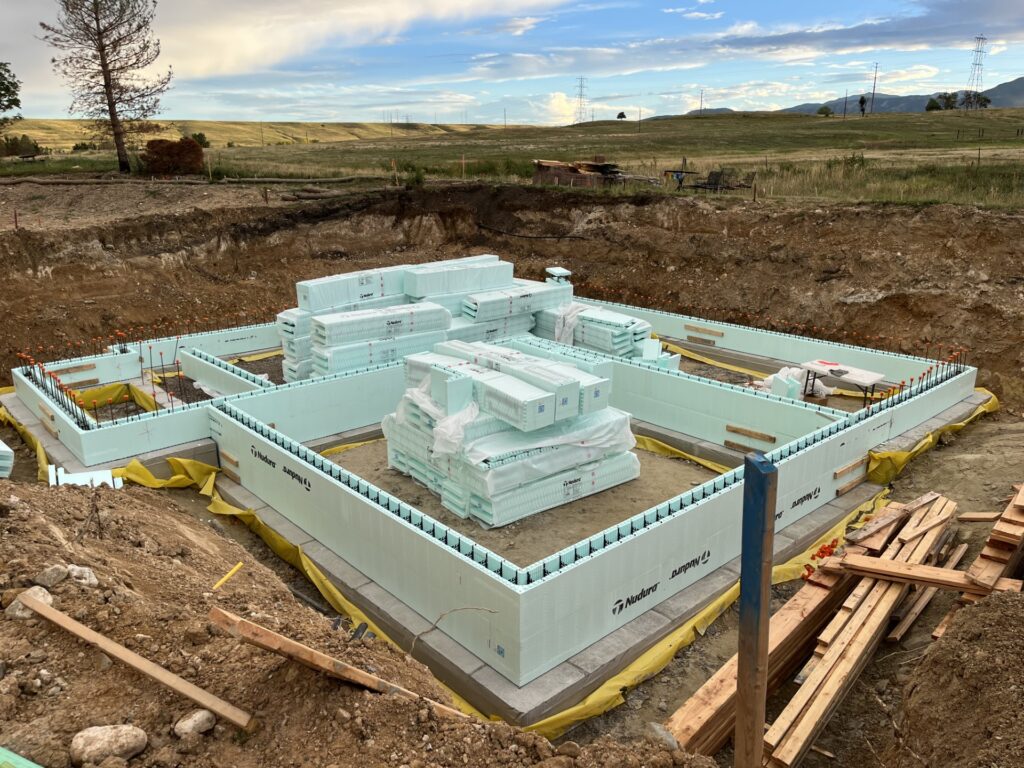Sustainability has become a central focus for many industries, particularly the construction industry. As climate change and environmental concerns continue to shape the way we think about the world around us, homeowners and builders alike are looking for ways to reduce the environmental impact of building and maintaining homes. One solution that is quickly gaining popularity is concrete homes. Known for their durability, energy efficiency, and long-term cost-effectiveness, concrete homes are becoming a top choice for those who want to live more sustainably.
Long-Term Durability Reduces Waste
One of the most significant advantages of concrete homes is their exceptional durability. Concrete is a material that can withstand extreme weather, wear and tear, and even the passage of time better than many traditional building materials, such as wood. While wood-framed homes may need frequent repairs or replacements due to damage from pests, rot, or weathering, concrete homes are built to last for generations without requiring major maintenance.
This longevity plays a significant role in sustainability. The longer a home lasts, the fewer resources are needed for repairs or replacements, reducing waste and the need for new materials. Concrete homes do not need to be torn down and rebuilt as frequently, which helps minimize construction waste and the environmental toll of demolishing old homes. As sustainability becomes more important to homeowners, building with concrete offers a solution that not only reduces waste but also lowers the environmental impact of maintaining a home over the long term.
Energy Efficiency Saves Resources
One of the primary concerns in sustainable living is reducing energy consumption, and concrete homes excel in this area. Concrete is an excellent thermal mass material, meaning it can absorb, store, and release heat more efficiently than other materials. During the winter months, concrete homes retain the heat generated by your heating system, keeping the indoor temperature stable. In the summer, concrete helps to keep the interior cool by absorbing the heat from the sun and slowly releasing it at night. This natural temperature regulation reduces the need for heating and cooling systems, which, in turn, lowers energy usage.
With energy costs rising around the world, homeowners are increasingly seeking ways to reduce their utility bills. Concrete homes provide a practical solution. Their ability to naturally regulate indoor temperatures helps reduce the reliance on energy-intensive heating and cooling systems. As a result, homeowners can save money while also reducing their environmental footprint. Moreover, many concrete homes are built using Insulated Concrete Forms (ICFs), which provide even greater insulation and help to further improve energy efficiency. By using less energy to maintain a comfortable indoor environment, concrete homes are significantly more sustainable than their wood-framed counterparts.
Reduced Carbon Footprint
The materials used to construct a home have a considerable impact on its overall carbon footprint. Concrete, when sourced responsibly, can be a much more sustainable choice compared to other traditional building materials. Concrete can be made using recycled materials like fly ash or slag, which helps reduce the environmental impact of production. These alternative materials are byproducts of other industrial processes and can be used to replace a portion of the cement, one of the most energy-intensive components in concrete production. This use of recycled materials helps decrease the amount of waste in landfills and minimizes the need for virgin resources.
Additionally, concrete’s long life cycle reduces the need for frequent material replacement. For example, wood homes may need to be re-roofed, repainted, or re-insulated every few years, all of which require new materials and energy to produce. Concrete, on the other hand, holds up to the elements for decades with minimal maintenance, which means fewer materials are needed over time. By choosing concrete for your home, you are investing in a more sustainable, long-lasting solution that minimizes resource depletion and waste generation.
Low-Maintenance and Cost-Effective
In addition to their durability, concrete homes are incredibly low-maintenance. Wood homes, while beautiful, require regular upkeep—painting, sealing, repairs to fix damage from insects, and more. Concrete homes do not suffer from the same issues. They are resistant to termites, rot, and water damage, which means homeowners spend less time and money maintaining their homes. This contributes to sustainability by reducing the need for frequent repairs, replacements, and the materials associated with those tasks.
Because concrete homes are low-maintenance, homeowners also avoid the environmental impact associated with frequent renovations and repairs. For example, the chemicals used in paint, sealants, and other maintenance products can have a significant environmental impact if not disposed of properly. The need for fewer repairs means that less of these potentially harmful substances are used. As a result, concrete homes promote a cleaner, more sustainable living environment.
Solar Energy Integration
Sustainable living is also about using renewable energy sources, and concrete homes provide an ideal foundation for integrating solar energy systems. The inherent thermal properties of concrete allow it to complement solar panels effectively. Because concrete homes retain heat well, they require less energy to regulate indoor temperatures, which means that solar panels can be even more effective in reducing the home’s energy reliance. Solar energy is a natural, renewable resource, and when combined with a concrete home, it creates an energy-efficient, eco-friendly living space.
Many concrete homes are designed with large windows or open spaces that allow for optimal sun exposure, which enhances the performance of solar energy systems. The combination of solar power and the energy-efficient nature of concrete helps homeowners drastically reduce their dependence on the grid, which is a crucial step in reducing carbon emissions and living more sustainably. Additionally, excess energy generated from solar panels can often be stored or fed back into the grid, further contributing to a greener environment.
Sustainable Design and Architecture
In addition to the physical benefits of concrete, the design and architecture of concrete homes often reflect a commitment to sustainability. Concrete homes can be designed with features like passive solar heating, natural ventilation, and strategic placement of windows to maximize energy efficiency and reduce reliance on mechanical systems. The open, flexible nature of concrete construction allows for designs that use fewer resources, reduce waste, and are better aligned with sustainable living principles.
Architects and builders who specialize in concrete homes are often well-versed in green building practices, ensuring that every aspect of the home, from construction to design, supports environmental responsibility. Concrete homes can be built with minimal environmental impact, using efficient designs that limit waste, reduce resource consumption, and maximize energy savings. Homeowners looking to live sustainably can benefit from these design practices, which contribute to a more eco-friendly lifestyle.
Circular Economy
Another aspect of concrete homes that makes them ideal for sustainable living is their ability to contribute to the circular economy. The circular economy focuses on reducing waste, reusing resources, and recycling materials to create a more sustainable system. Concrete can be recycled at the end of its life cycle, reducing the need for new raw materials. When a concrete structure reaches the end of its life, it can be broken down and used in the creation of new buildings, roads, or other infrastructure.
By choosing concrete for your home, you are supporting this model of reuse and recycling. Concrete homes that are built to last can eventually be repurposed, further reducing their overall environmental impact. This cycle of use and reuse promotes the sustainable use of resources and helps build a greener, more circular economy.
A Step Forward
Concrete homes are more than just a durable and cost-effective option—they are an ideal solution for sustainable living. From their long-lasting durability and low-maintenance needs to their energy-efficient properties and environmental benefits, concrete homes offer numerous advantages for homeowners looking to reduce their ecological footprint. The versatility of concrete also allows for design flexibility, making it easier to integrate sustainable features like solar panels, rainwater harvesting, and passive solar heating.
As we continue to confront the challenges of climate change and resource depletion, concrete homes represent a step forward in building more sustainable, energy-efficient, and eco-friendly living spaces. Whether you’re interested in saving money on your energy bills, contributing to environmental conservation, or simply enjoying a more durable and low-maintenance home, concrete offers a practical and forward-thinking solution.
At Batten Builders, we specialize in creating custom concrete homes that are designed with sustainability in mind. If you’re ready to explore how a concrete home can contribute to a more sustainable lifestyle, reach out to us today. Together, we can build the home of your dreams while protecting the planet for future generations.





